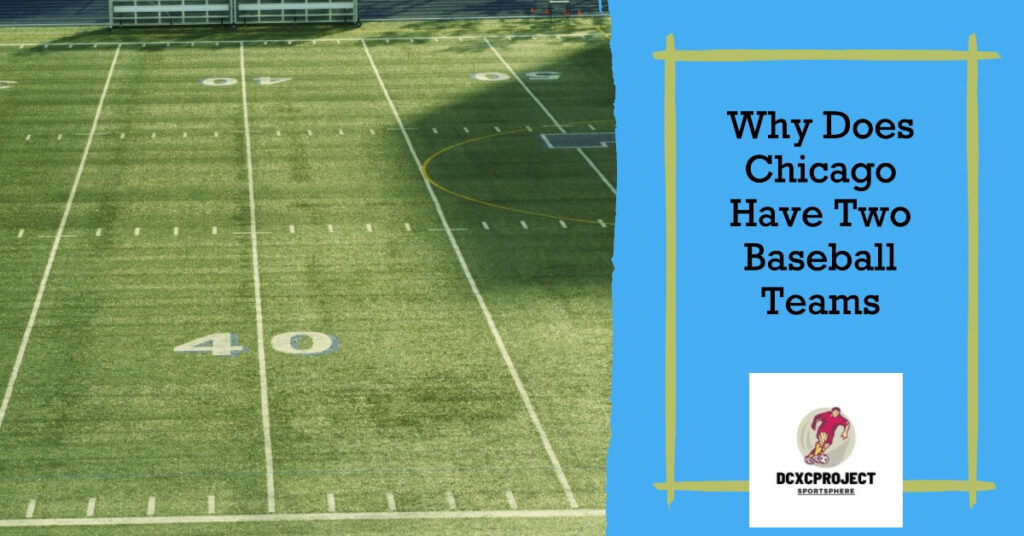Chicago boasts two Major League Baseball teams, the Cubs and the White Sox, primarily due to historical developments and a burgeoning sports culture in the city. Why does Chicago have two baseball teams? The answer lies in the city’s growth and the emergence of baseball as a popular pastime. In the late 19th and early 20th centuries, as Chicago rapidly expanded, baseball gained immense popularity.
The demand for professional baseball teams led to the formation of both the Chicago Cubs and the Chicago White Sox, providing fans with two options to rally behind. The historic rivalry between the teams further solidified their place in Chicago’s sports scene. The division between the North Side (Cubs) and the South Side (White Sox) reflects the city’s geographical and cultural diversity. This dual-team dynamic has been fueled by the passionate fan base and a desire for local bragging rights. The distinctiveness of each team’s identity, home ballpark, and fan traditions contributes to the unique sports landscape of Chicago, making it a city where baseball holds a special place in the hearts of fans on both sides of town.
A Tale of Two Teams
The Chicago Cubs
The Chicago Cubs, one of the city’s two Major League Baseball teams, have a rich history that contributes to Chicago’s dual-team dynamic. Founded in 1876, the Cubs are one of the oldest franchises in baseball, initially known as the Chicago White Stockings before adopting their current name in 1903. Wrigley Field, the iconic home of the Cubs located on the North Side, has been a landmark since 1914. The team’s storied past includes memorable moments, such as winning the World Series in 1907 and 1908, earning them a special place in baseball history. The Cubs’ enduring popularity is also attributed to their passionate fan base, affectionately known as the “Cubs Nation,” who fill the stands with unwavering support season after season. The team’s distinctive blue and red colors, iconic Wrigley Field traditions like the singing of “Take Me Out to the Ball Game” during the seventh-inning stretch, and the lovable team mascot, a bear named Clark, all contribute to the unique identity of the Chicago Cubs.
The Chicago White Sox
The Chicago White Sox, the other half of the city’s baseball legacy, have played a significant role in shaping Chicago’s sports culture. Established in 1900, the White Sox, also known as the “South Siders,” originated as one of the American League’s eight charter franchises. The team has undergone various successes and challenges, with one of the most notable achievements being their World Series victory in 2005, breaking an 88-year championship drought. The White Sox proudly call Guaranteed Rate Field on the South Side their home, creating a distinct sense of identity. The team’s black, silver, and white color scheme, coupled with iconic imagery like the giant exploding scoreboard, contributes to the unique visual character of the White Sox. The fan base, known for its fervent loyalty, adds to the vibrant atmosphere during games. The White Sox embody the dynamic spirit of Chicago’s South Side, and their presence alongside the Cubs enriches the city’s baseball heritage, offering fans a choice and contributing to the enduring baseball culture of the Windy City.
The Great Chicago Baseball Rivalry
The Great Chicago Baseball Rivalry between the Chicago Cubs and the Chicago White Sox is a storied and intense competition that has captivated fans for generations. Rooted in the historical development of both teams, the rivalry adds an extra layer of excitement to the city’s sports culture. The Cubs, representing the North Side, and the White Sox, representing the South Side, compete not only for baseball supremacy but also for local pride and bragging rights. The crosstown rivalry brings an unparalleled energy to the city, with fans passionately supporting their respective teams. The annual interleague matchups, often referred to as the “Crosstown Classic,” are highly anticipated events that draw attention from baseball enthusiasts nationwide. This spirited competition, fueled by the contrasting identities of the two teams and their dedicated fan bases, adds a unique and vibrant dimension to the baseball landscape in Chicago, making it a city where the love of the game is deeply intertwined with a fierce sense of regional loyalty.

Reasons Behind the Dual Legacy
Historical Factors
Historical factors play a crucial role in understanding the existence and dynamics of Chicago’s dual baseball teams and the subsequent Great Chicago Baseball Rivalry. The late 19th and early 20th centuries marked a period of rapid growth and urbanization for Chicago. As the city expanded, so did the popularity of baseball. In response to the burgeoning interest in the sport, two Major League Baseball teams emerged—the Chicago Cubs in 1876 and the Chicago White Sox in 1900. The historical context of this era, marked by industrialization, migration, and a burgeoning middle class, provided a fertile ground for the development of professional sports teams.
The establishment of the Cubs and the White Sox also coincided with the formation of the American and National Leagues, contributing to the competitive landscape of Major League Baseball. The historical rivalry between the North Side and South Side, reflecting the city’s geographical and cultural divide, further fueled the competition between the Cubs and the White Sox. Over time, these historical factors have become deeply ingrained in the identity of both teams, shaping fan loyalties, traditions, and the unique baseball culture that defines Chicago. The Great Chicago Baseball Rivalry stands as a testament to the enduring impact of historical forces on the sports landscape of a vibrant and dynamic city.
Neighborhood Loyalties
Neighborhood loyalties play a significant role in the unique dynamic of Chicago’s dual baseball teams and the Great Chicago Baseball Rivalry. The city’s North Side is synonymous with the Chicago Cubs, while the South Side is passionately represented by the Chicago White Sox. These teams have become woven into the fabric of their respective communities, creating a deep sense of neighborhood pride and identity.
Generations of families, friends, and neighbors have passed down their allegiance to either the Cubs or the White Sox, creating a tradition of loyalty that transcends generations. The choice of which team to support often becomes a familial and communal affair, with neighborhood gatherings, barbecues, and friendly banter during the baseball season. The colors, logos, and traditions associated with each team become symbols of local identity, fostering a sense of community.
The neighborhood loyalties also amplify the intensity of the Great Chicago Baseball Rivalry. When these teams meet on the field, the stakes extend beyond the game itself; it becomes a showdown between communities, each vying for supremacy and boasting rights. The neighborhood loyalties contribute to the vibrant atmosphere during the Crosstown Classic matchups and add a personal, grassroots dimension to the broader historical and cultural factors that define Chicago’s baseball landscape. In essence, these neighborhood loyalties transform the Great Chicago Baseball Rivalry into a celebration of community pride and shared identity.
Cultural Differences
Cultural differences play a pivotal role in shaping the rich and diverse tapestry of human societies. Rooted in history, traditions, and values, these differences give each community a unique identity and contribute to the mosaic of global cultures. From language and customs to art and cuisine, cultural distinctions provide a lens through which individuals view the world. Embracing and understanding these differences fosters a more interconnected and inclusive world, where the richness of various cultural expressions can be celebrated.
Cultural diversity is not only an expression of humanity’s past but also a dynamic force shaping its future. Interactions between different cultures lead to the exchange of ideas, innovation, and the evolution of shared global experiences. However, it is essential to navigate these differences with respect and open-mindedness, recognizing that diversity is an asset that enriches societies rather than a source of division. In an increasingly interconnected world, cultural differences offer opportunities for collaboration and learning, fostering a global community that values pluralism and the coexistence of myriad perspectives. Ultimately, by appreciating and embracing cultural differences, individuals contribute to the collective narrative of human civilization, weaving a vibrant and interconnected global tapestry.

Conclusion
In conclusion, the presence of two baseball teams in Chicago is a testament to the city’s rich sports history and the deep-rooted passion of its residents. The Cubs and the White Sox have carved their own legacies and continue to captivate baseball fans with their storied past and exciting present. Whether you’re a fan of the Cubs’ “W” flag or the White Sox’s “Blackout,” one thing is for certain: Chicago is a city that loves its baseball, no matter which team you support.

